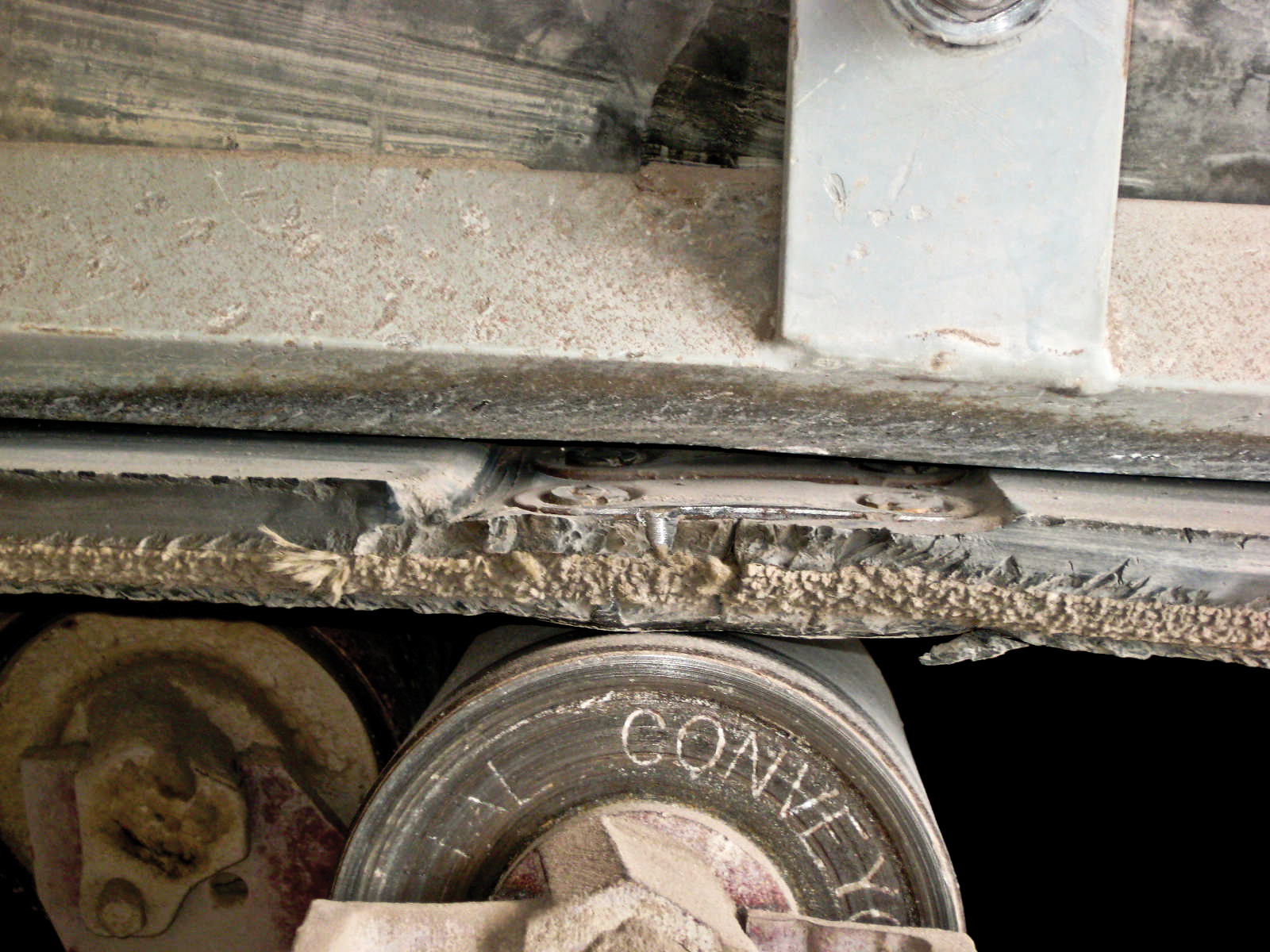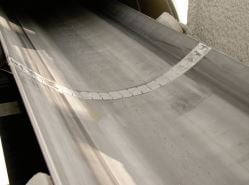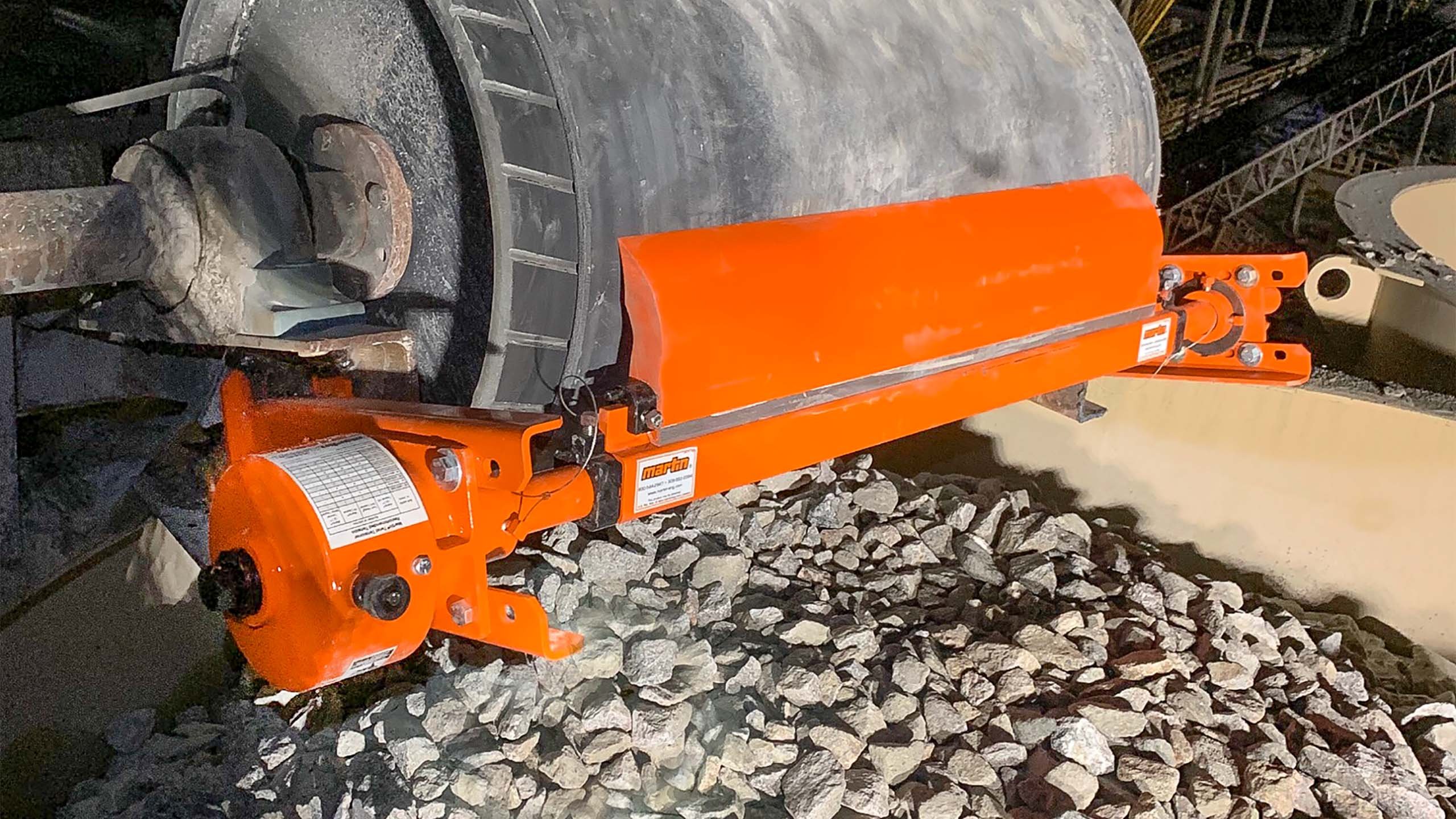To protect the corners of the belt at the splice, it is often useful to notch, or chamfer, the corners of the belt at the joint. On one-direction belts, it is necessary to notch only the trailing belt end. The notch is cut in the belt from the first fastener on each end of the splice out to the belt edge at a 60-degree angle. The notch will help prevent the corners of the belt from catching on the conveyor structure and damaging the splice or tearing the belt.

Getting Along with Belt Cleaners
Mechanical belt fasteners sometimes conflict with aggressive belt-cleaning systems, especially where hardened metal blades are used. Many operators prefer to use nonmetallic (e.g., urethane) belt-cleaner blades on belts with mechanical splices for wear of wearing or catching the splice and ripping it out. Most of these types of problems with belt-cleaning systems can be traced to improper selection or installation of mechanical splices.
New developments help make mechanical fasteners more scraper-friendly. One is the development of tools for skiving that easily remove a uniform strip of belt cover material, leaving a smooth, flat-bottomed trough with a rounded lip to receive the splice. These devices are much faster and safer than earlier methods that used knives or grinders.
A second development is new designs for “fastener friendly” cleaners, offering special blade shapes, materials, and mounting methods that minimize impact problems with fastener plates. The recent introduction of “scalloped” mechanical clips, designed to allow belt-cleaner blades to “ramp” over the plates without damage to the cleaner or the splice, offers the possibility of improvement in durability of both blade and fastener.
There are no empirical studies on the wear of splices due to interaction with bulk material and with the cleaning and sealing systems. If good installation and maintenance practices are observed, the cleaning and sealing systems and the splices should be chosen on the basis of the performance required, rather than any worries over their life expectancy.
Advantages of Mechanical Splices
The principal advantages of mechanical splicing are that it allows the belt to be separated easily. This separation of the splice allows extension or shortening of the belt in applications like mining; and it enables service to other conveyor components, such as pulley lagging, idlers, or impact cradles to be more easily complete.
An additional advantage of mechanical fasteners is that they minimize repair downtime. These splices can often be installed in about an hour or two, whereas a vulcanized joint can easily take a full day or more to complete. Fasteners are easily installed by available plant maintenance personnel, using only hand tools or simple portable machines; in contrast, vulcanizing usually requires calling independent contractors with specialized equipment. The fastened joint will cost a few hundred dollars and consume only a few millimeters of belting, whereas the vulcanized joint can cost several thousand dollars and consume several meters of belting.
Mechanical fasteners provide a splice that is simple to perform and easy to inspect. If regularly inspected, a mechanical splice will normally provide notice of an impending failure. Mechanical splices are low cost and can be stored for long periods. They allow quick installation and enable easy lengthening or shortening of the belt.
It is important to make sure that fastener selection follows the recommendations of manufacturers of both the belt and the fasteners.
See Also: Notching the Trailing Side of a Conveyor Belt Splice Part 2 | Part 3.




















Leave Comment